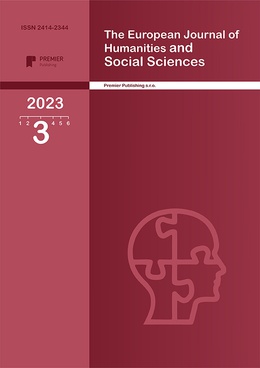DIFFERENT WAYS OF TEACHING GRAMMAR-TRANSLATION TO HIGHER SCHOOL STUDENTS WITH COMMUNICATIVE METHODS
Authors
Iskandarova Vusala Fazil

Share
Annotation
One of the most important difficulties encountered during the teaching of a foreign language in universities is to convey grammar in the correct and most competent form. Considering these difficulties, the Grammar-Translation method can be considered the most important example of language teaching methods outside the context of real speech. The main nuance in this method is the grammatical aspects of the language, the mechanical mastering of tenses, the translation of unrelated sentences from the target foreign language to the native language, and at the same time from the native language to the foreign language. The most appropriate way to form and develop habits and skills is studies. That is why, in order to achieve any achievements in various fields of the studied language, special study systems should be created. Also, the development of the appropriate grammatical, lexical, phonetic study system, which is most related to various aspects of the language, will provide sufficient help to those learning a foreign language as a second language.
Keywords
Authors
Iskandarova Vusala Fazil

Share
References:
- Adamson, B. (2004) ‘Fashions in Language Teaching Methodology’, in A. Davies and C. Elder (eds) The Handbook of Applied Linguistics. London:
- Blackwell. 604-622. Akbari, R. (2008) ‘Postmethod Discourse and Practice’. TESOL Quarterly, 42/4. 641-652. Allwright, D. (1991) ‘The Death of the Method’, CRILE Working Paper, No. 10. Lancaster, Lancaster University.
- Allwright, D. and Hanks, J. (2009) The Developing Language Learner: An introduction to Exploratory Practice. Basingstoke: Palgrave Macmillan. Anthony, E. (1963) ‘Approach, Method and Technique’. English Language Teaching, 17. 63- 7. 1.
- Bertrand. D. Littérature et l'enseignement, la perspective de lecteur. CLÉ internationale., 1988 p. 279
- Carter, R, Long, N. M. "Teaching Literature" Hong Kong: Longman. 1991, p. 135.
- Chastain, Kenneth. The Development of Modern Language Skills: Theory to Practice. Philadelphia: Center for Curriculum Development, 1971, p. 356
- Courtillon‚ J.. Elaborer un cours de FLE‚ Paris: Hachette. p 400, 2003
- Edge.J. "Mistakes and corrections". London, Logmans. 1989, p. 70
- Évelyne Rosen, Le point sur le Cadre européen commun de référence pour les langues, Paris, CLE international, 2010, p. 144
- G. Sh. Kazimov. "Modern Azerbaijani language" Baku. 2010, p. 400
- Widdowson, H.G. "Knowledge of language and ability for use" Applied Linguistics, 1989, p. 259.


